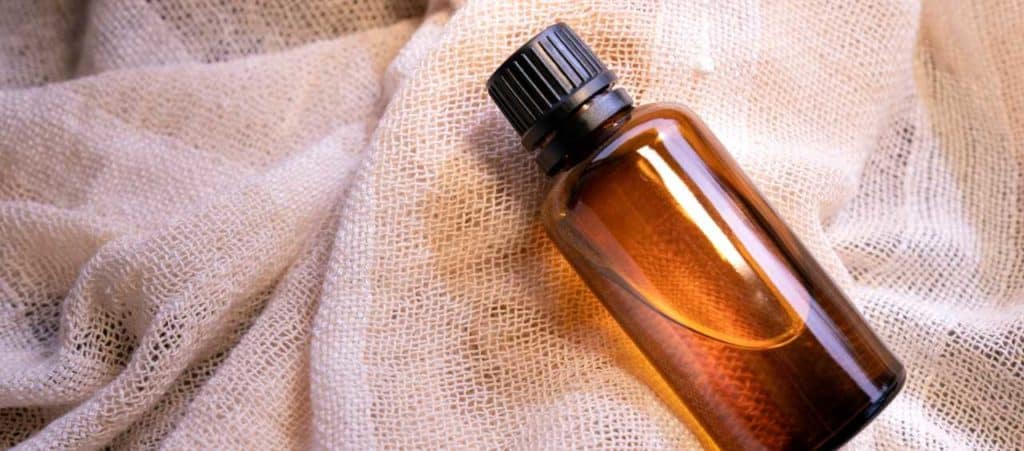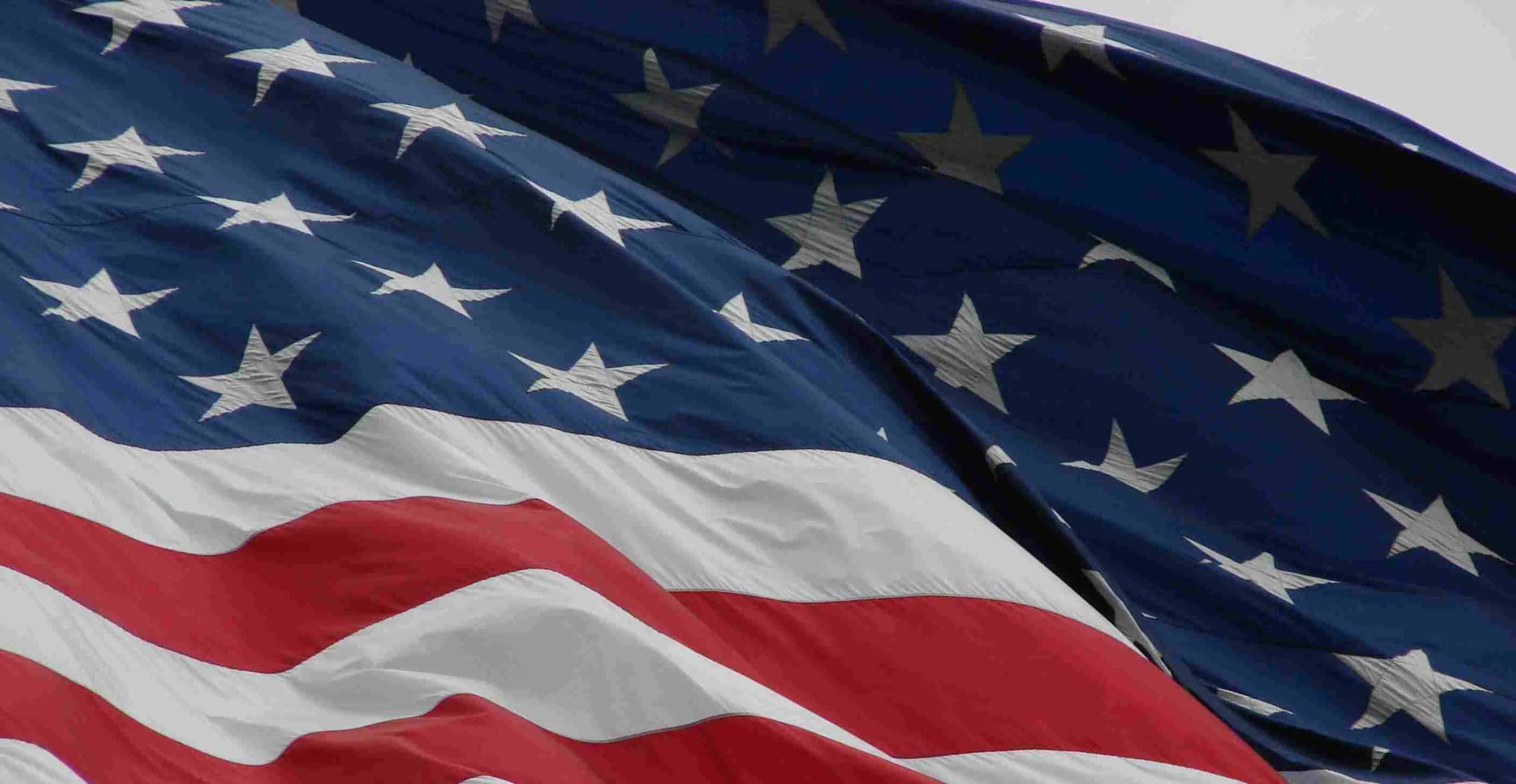The United States holds a pivotal role in the cosmetics industry, impacting the entire supply chain and setting trends for Western markets. The recent enactment of the MoCRA (Modernization of Cosmetics Regulation Act) carries significant weight as it marks the first substantial change in US cosmetic regulation at the federal level since 1938.
So, what does this change entail? The MoCRA introduces amendments to Chapter VI of the Federal Food, Drug, and Cosmetic Act (FDCA), adding 10 new sections to the existing three. In essence, the new regulation aligns cosmetics with other consumer products overseen by the Food and Drug Administration (FDA). The legislation was approved by Congress on December 23, 2022, and President Biden signed it into law on December 29, 2022. However, cosmetics manufacturers have a one-year grace period to comply. The MoCRA is set to officially take effect on December 29, 2023.
But what are the specific implications of this change?
MoCRA: Fundamental principles of the cosmetic regulation change in the USA
Why was an update to the existing regulation necessary? The reasons, as we will delve into in this article, are primarily associated with the fact that the previous regulation, dating back to 1938, was highly fragmented and did not ensure comprehensive product safety (as safety did not require demonstration or documentation), resulting in inadequate consumer protection. Additionally, the FDA had limited authority to take action.
New FDA powers for cosmetics under MoCRA
With the implementation of the MoCRA, the FDA has been granted three new enforcement powers to enhance its regulation of the cosmetics industry:
1. Full Preemption
MoCRA introduces full preemption, which means that any state or local laws conflicting with the FDA’s regulations regarding product listings, adverse event reporting, facility registrations, records, good manufacturing practices (GMP), recalls, or safety substantiation will be overridden. MoCRA’s preemption also takes precedence over existing state requirements, such as the California Safe Cosmetics Act, effectively serving as an additional layer of regulation.
This change eliminates the introduction of disparate legislation in individual states, counties, or towns.
2. Mandatory Recall Authority
Under the new regulations, MoCRA now authorises the FDA to inspect cosmetics facilities and their records. It also gives the FDA the ability to enforce a mandatory recall on any products that they deem as misbranded, adulterated, or pose public health risks.
3. Facility Suspensions
MoCRA gives FDA the authority to suspend a facility’s registration if it determines that a cosmetic product either manufactured or processed by that facility has:
- A reasonable probability of causing serious adverse health consequences
- Other products manufactured by the facility that may be similarly affected
Once a facility’s registration is suspended, the FDA prohibits the introduction of any cosmetic products from that facility into United States commerce until the registration is reinstated.
How the new MoCRA affects manufacturers

In addition to the greater powers attributed to the FDA, the most important aspects introduced with the MoCRA are:
• Introduction of the US Responsible Person, whose name will appear on the label of cosmetic products
• Recall of cosmetic products from the market (introduction of the principle of traceability)
• Labelling of allergens and contact details to report adverse events
• Mandatory compliance with GMP
• Registration of facilities (located in the US or abroad) which must be renewed every two years
• Product Listing
• Management of adverse effects (which introduce cosmetovigilance procedures): Receive, review, respond and report
• Record keeping and reporting of adverse events
• Safety Substantiation (which introduces the concept of safety evaluation)
Contrasting Regulatory Approaches: EU vs. US Cosmetic Regulation
In comparison to the stringent and comprehensive European cosmetic regulation 1223/2009, the US market, as previously discussed, has historically been characterised by its more open and less regulated nature. Until now, the fundamental principle in the US was that a cosmetic product was presumed safe until proven otherwise, in stark contrast to the EU, where proving the safety of cosmetics is a prerequisite before market authorization.
While many major US cosmetic companies voluntarily adhered to the EU-like safety approach, it was not a mandatory requirement. Why did they choose to do so, even when it wasn’t obligatory? This decision stemmed from a cautious market approach and a commitment to customer protection.
A regulation with fewer initial restrictions might appear simpler for companies, but paradoxically, it can become a double-edged sword. While it offers more freedom initially, it can present challenges in the event of issues arising. These challenges encompass not only isolated concerns such as allergens but also extend to broader aspects like formulation choices, ingredients, and even packaging.
Compliance with regulators and the provision of scientific evidence certifying product safety in advance serve as protective measures for both consumers and businesses, particularly in the event of disputes. This approach is well-established among European companies but represents a novel concept under the US regulatory framework.
Individual US states had already recognized the need for such regulations and, over time, filled the federal void with local laws, as exemplified by California’s enactment of the Safe Cosmetic Act in 2005. However, this resulted in regulatory fragmentation, requiring every cosmetic company interested in selling products in the USA to navigate different compliance requirements for each state. This posed a substantial challenge, especially for foreign companies.
Examining the Impact of MoCRA: Changes in US Cosmetic Regulation
MoCRA has ushered in a significant shift in the regulation of cosmetics, harmonising it at the federal level in the United States. In essence, this means that while there may be an increase in regulations, they will be standardised and applicable to all. This move reflects a more “European” approach, where demonstrating product safety in advance is a fundamental requirement.
Let’s see in detail what it provides:
Identification of a “Responsible Person”
This is the manufacturer, packager or distributor whose name appears on the label of the cosmetic product. This person effectively becomes the “go-to-person” who represents the company in the eyes of the Regulator. Among the obligations of the US Responsible Person is the submission to the FDA of a list of cosmetics already on the market and their respective ingredients, to be renewed every year.
Any changes to these products must be reported annually.
The U.S. Responsible Person shall follow these points:
- Shall have one single point of contact for the authorities
- Shall do the product listings and facility registration (if applies)
- Shall make registrations of product listing, facility registration
- Shall enforce a management of Adverse Events and Serious Adverse Events
- Shall prepare Safety Substantiations for each cosmetic product
- Shall declare the allergens on the labels.
- Shall include contact details on the labels to report adverse events
- Shall ensure that the facilities manufacturing and processing the cosmetic products comply with Good Manufacturing Practices (GMP)
- Shall follow specific regulatory expertise
The recommendation is to always carefully assess the selection of a local distributor, considering factors such as the confidentiality of product/supplier information, the distributor’s reliability in terms of regulatory and scientific expertise, their experience and proficiency in dealing with authorities, and their capabilities in data retention.
Facility Registration

Facilities manufacturing and processing cosmetic products marketed in the U.S. need to register their facility on the FDA.
Facilities must complete their registration with the FDA by December 29, 2023. New facilities, upon commencement of operations, will have a 60-day window to register. It’s important to note that this registration requirement specifically applies to establishments engaged in the production and processing of finished cosmetic products.
Facilities such as warehouses, labelling and packaging centres, distribution hubs, companies involved in the production of preparations and ingredients, as well as research and product study centres, are exempt from this registration mandate.
On the other hand, companies responsible of performing cosmetic product batch release testing (quality controls, microbiological controls, etc.) qualify as Facilities and must be registered.
Furthermore, the registration must be renewed every two years.
For foreign companies, it is mandatory to appoint a U.S. Agent located in the USA as part of the registration process. The U.S. Agent will act as a representative before the FDA. The U.S. Agent must reside in U.S. soil.
The information required in order to complete the Facility Registration will be as follows:
• Name, address, e-mail and telephone number of the Facility
• Name of the owner and/or operator of the Facility.
• The Facility’s FEI number (FDA Establishment Identifier)
• Name, e-mail and telephone number of the U.S. Agent
• Brand Names associated with the Facility
Compliance with Good Manufacturing Practices
As previously mentioned, facilities will be required to adhere to Good Manufacturing Procedures (GMPs). Currently, there are no specific regulations or references in place, but the FDA is actively working on establishing them.
To provide clarity and enforce clear rules, the final guideline on Good Manufacturing Practices (GMP) is set to be established by December 29, 2024, with mandatory compliance beginning on December 29, 2025. The FDA is currently in the data collection phase and is defining the guidelines, which are expected to closely align with those presently utilised in the European Union, based on the ISO 22716:2008 guidelines.
It is worth noting that if, during inspections, the FDA identifies irregularities in this aspect (among others) or deems a product to pose a risk to consumer health due to non-compliance, the FDA will provide the manufacturer with an opportunity to initiate a voluntary recall of the product. If the manufacturer fails to do so, the FDA will enforce a mandatory recall and consider suspending the registration of cosmetic establishments. This marks a significant change, as the FDA previously did not have the authority to directly recall products.
Product Listing
The US Responsible Person is required to list all the cosmetic products marketed in the U.S. on the FDA. The US Responsible Person is required to maintain records of product listings and their respective ingredients, updating this information annually.
The information required in order to complete the Product Listing will be as follows:
• Confirm if your company qualifies as Small Business. This link can help you determine if you are a Small Business: https://collaboration.fda.gov/decisiontool/
• Responsible Person type of Business: Choose among Manufacturer, Packer or Distributor
• Name and telephone number of the Responsible Person
• Name of product
• Confirm if the product contains Fragrances, Flavours or both
• Confirm if the product is for professional use only
• Product category code(s) corresponding to the product
• Complete list of ingredients
• List of facilities where the cosmetic product is manufactured or processed
• Name, FEI number, Address and Zip/Postal Code of each facility listed
• For each facility listed, confirmation is needed as to whether they are exempt from registration
• Product’s labelling
Obligation to notify adverse reactions – Serious Adverse Events
It might seem surprising, but until now, this obligation did not exist, although some companies voluntarily undertook this practice. However, under the new regulations, it is now mandatory for the U.S. Responsible Person to establish a system for receiving, reviewing and responding to adverse events reports. It is also mandatory to report to the FDA any serious adverse events resulting from the use of a product within 15 days of receiving the report. All such cases will be documented and maintained in a dossier, which must be retained for a period ranging from 3 to 6 years, depending on the size of the company.
This definition aligns closely with the concept of Serious Undesirable Effects (SUE) as outlined in the EU standard.
When receiving a serious adverse event report, the U.S. Responsible person must:
• receive the reports: to the addresses (physical, email and website) declared on the labelling
• send the report and copy of the product labelling to the FDA within 15 days of receiving the report
• send medical update (New Medical Information) to the FDA: for 1 year from the event, within 15 days of receiving further data
• maintain records for 6 years (3 years for small businesses)
• allow access to authorised Department of Health and Human Services personnel
• provide the list of the components of the fragrance within 30 days, if the FDA, in case of suspicion on components of a specific fragrance, request the list of all the products that contain them.
Preventive Safety

The safety of the cosmetic product will be demonstrated with “adequate tests”; otherwise it will be considered non-compliant. The US Responsible Person is required to keep record of this evidence and to provide it for any checks.
Somebody said «PIF»? The similar approach
The point in this preventive safety report will be to scientifically demonstrate the product and ingredients safety by:
• Reviewing the necessary in-depth studies, tests, analyses, trials and information (in other words, the toxicological data)
• Attaching the necessary documentation to support safety
• Always supported and accompanied by the necessary documentation
• Keeping documentation valid and up-to-date
• This safety report would be prepared by a Qualified Expert with documented competence and experience (the so-called Safety Assessor).
The last point, the requirement for Toxicological Risk Assessment is not new, as it has long been mandatory for selling cosmetics in the USA.
In addition, it’s worth noting that an official method for detecting the presence of asbestos in products containing talc will soon be published. Furthermore, the FDA will be involved in evaluating the use and safety of perfluoroalkyl and polyfluoroalkyl substances (PFAS) in cosmetic products, including assessing any associated risks. Following these evaluations, the Responsible Persons will need to adjust cosmetic products as necessary in line with these assessments.
Modification of the labelling of cosmetic products

The label must now include the following points:
• Same reference frame as before – Principal Display Panel (PDP) and Information Panel (IP
• Products for professional use – Warning on the label
• U.S. Responsible Person details – Address, telephone, email, website
• Fragrance allergens in the ingredients list
• Contact details to report adverse events: Address, telephone, email, or website (could be from the U.S. Responsible Person or the U.S. Agent)
The specific list of required label points is yet to be determined. It’s possible that there will be alignment with the EU list. Gone are the days when a cosmetic company could simply list “fragrance” as an ingredient without disclosing each of the individual ingredients within the fragrance. MoCRA now mandates that any ingredient identified as an allergen by the FDA must be listed and fully disclosed on the label.
A proposed guidance on this matter is expected to be released within 18 months of enactment, followed by a final rule within 6 months after the close of the public comment period. While the exact details are not known at this time, there may be significant similarities to allergen disclosure rules as seen in the European Union.
Key action plan recommendations for MoCRA compliance in the cosmetics industry
What to do now:
• identify a responsible person
• Appoint a U.S. Agent (for foreign facilities)
• organise the management of Adverse Effects (Cosmetic Survey), perhaps implementing it within its own Quality Management System
• Prepare the Safety Substantiation for each product in English, updated, including all the necessary information
• Assess the alignment of your product labelling with MoCRA requirements. While the FDA makes a decision and provides clear guidance, we recommend taking into account the European Regulation requirements, particularly in relation to allergens
What to do next (when the telematic notification portals become active):
• Do the Facility Registration
• Do the Product Listing
• Comply with GMP and be prepared for GMP-based inspections by the FDA
• Be prepared for receiving, managing and reporting adverse event reports
MoCRA Exemptions for Small Businesses
Under MoCRA, responsible persons such as facility owners, operators, or their designated responsible parties with gross annual sales in the United States less than $1,000,000 USD over the past three years are now defined as small businesses. MoCRA exempts these small businesses from GMP, registration, and product listing requirements. They are only required to maintain adverse event reports for three years.
However, such exemptions do not apply to manufacturers or facilities that manufacture or process the following cosmetic products:
- Products that regularly come into contact with the mucus membrane of the eye under customary or usual conditions of use.
- Products that are injected.
- Products that are intended for internal use.
- Products that are intended to alter appearance for more than 24 hours under customary or usual conditions of use and removal by the consumer is not part of such conditions of use.
Exemptions also exist for certain products and facilities that are subject to requirements for drugs and devices.
How TAOBE can help you while selling cosmetics in the USA
As a cosmetics regulatory expert with many years of experience, Taobe can help your brand sell in the United States by verifying compliance of your formulas and labels at both the state and federal levels, as well as conducting a safety assessment of the cosmetic product.
As a cosmetics regulatory expert with many years of experience, Taobé can help your brand sell in the United States by:
- Doing Facility Registrations on your behalf
- Doing Product Listings on your behalf
- Acting as you U.S. Agent
- Verifying compliance of your formulas and labels at both the state and federal levels
- Preparing safety substantiations for your cosmetic products
- Keeping record of your Adverse Event Reports
In addition, our experts can provide you with all the information you need regarding the Modernization of Cosmetics Regulation Act (MoCRA). Since all changes will are not happening at the same time, we are able to provide you with the next steps and different compliance deadlines for GMP compliance, labelling requirements, safety evidence, publication of the PFAS report on the FDA website, for example.
Just contact us and we will be happy to help you!



